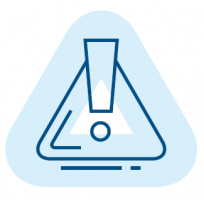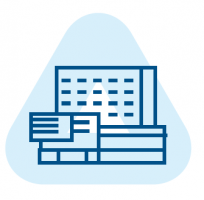Ngā Āheitanga Whakaharere
Organisational Capability
Our People
Ō Mātau Tāngata
Recruiting and Retaining Our Talent
The Intelligence Community Shared Services People and Capability team provides advice, support and strategic workforce development initiatives to the GCSB and NZSIS. This work supports the continued growth of their workforces, and retention and development of existing staff. These activities ensure the NZIC has the best and most representative workforce possible to meet the expectations of the New Zealand Government and the public.
The GCSB continues to prioritise initiatives to attract and retain a diverse workforce, including competitive remuneration, closing gender and ethnic pay gaps, enabling more flexible working, investing in employee development and fostering an inclusive culture.
Beyond Ordinary People
The success of our agency depends on our technological capabilities, our legal authorities, our strong partnerships and our social licence. But above all, it depends on the quality, diversity, professionalism and technical capabilities of our people.
The GCSB is a public service department with 596.7 full-time equivalent staff made up from 605 staff, as at 30 June 2024. The NZIC operates shared corporate service functions employing both GCSB and NZSIS staff to work across both agencies.
Turnover
The GCSB has seen a reduction in staff turnover by 4.4 percentage points - from 15.6 percent in the 2022/23 financial year to 11.2 percent at 30 June 2024. When investigated, employees consistently report the primary reason for leaving is career development.
Our average tenure for permanent staff is 5.9 years. This has decreased by 0.4 years from 2022/23. Over the 12 months to 30 June 2024, the majority of our core workforce who ended their employment with us (68.3 percent) left within five years of joining.
| 2019/20 | 2020/21 | 2021/22 | 2022/23 | 2023/24 | |
|---|---|---|---|---|---|
| Staff Turnover | 13.7% | 8.1% | 19.3% | 15.6% | 11.2% |
| Public Service | 10.1% | 10.5% | 17.3% | 15.9% | 11.9% |
Retention and Recruitment
In response to recruitment and retention challenges of the previous financial years, the GCSB and NZSIS endorsed a Joint Recruitment Transformation Programme, which commenced in September 2023.
The primary objective of this work is to address the strategic, technological and capability challenges that are barriers to us engaging effectively in the market. The programme also recognises the need for targeted interventions to address the agency’s workforce needs in the face of a global talent shortage, changing workforce expectations, commitment to our diversity and inclusion targets, and the unique challenges of acquiring talent for national security roles.
Our Recruitment Transformation programme is focused on ensuring our systems, processes and practice are positioned to engage with the market effectively and at pace; prioritise internal mobility in support of talent development and retention; and our market presence contributes to better national security outcomes by attracting and retaining diverse and high performing talent in our community.
Starting with an efficiency and quality focus in 2023/24, we have improved transparency across the recruitment pipeline through the adoption of new, and development of existing tools. We improved data capture and analysis to assess channel effectiveness and inform the quality and efficiency of initiatives. As a result of these insights we were able to undertake a series of process and practice improvements, resulting in tangible reductions in cost and time to hire.
Promoting Diversity and Inclusion
Age demographics
The majority of our workforce is younger than 45 years old (59.4 percent). Our average age is 41.7 years, which has decreased slightly by 0.6 years since 2022/23. Of our workforce, almost half (45.1 percent) started within the last three years.
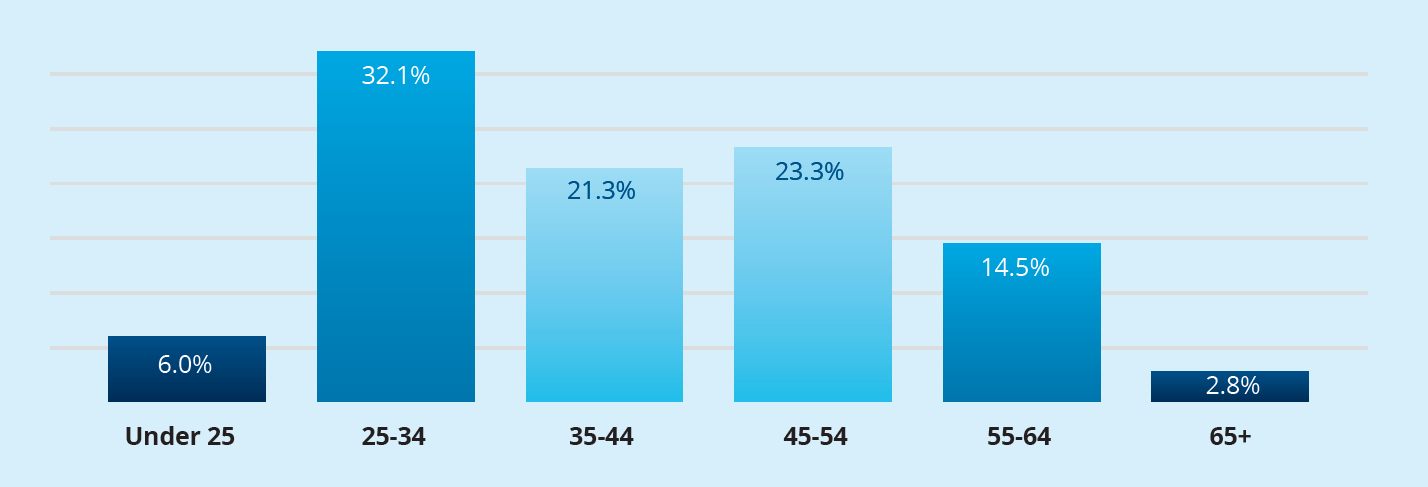
Graph: GCSB Age Demographic Breakdown as at 30 June 2024
Gender Diversity
As at 30 June 2024 women made up 53.1 percent of the GCSB’s senior management. We have continued to successfully meet our diversity and inclusion aspiration of women forming no less than 50 percent of our senior management group.
| 2019/20 | 2020/21 | 2021/22 | 2022/23 | 2023/24 | |
|---|---|---|---|---|---|
| Senior Management (Tier 2 and 3) | |||||
| Men | 54.5% | 47.8% | 36.8% | 40.0% | 46.9% |
| Women | 45.5% | 52.2% | 63.2% | 60.0% | 53.1% |
| All Staff | |||||
| Men | 64.4% | 64.5% | 61.1% | 63.2% | 64.0% |
| Women | 35.6% | 34.9% | 37.9% | 35.5% | 35.2% |
| Another Gender | - | 0.2% | 0.2% | 0.6% | 0.8% |
| Undisclosed | - | 0.4% | 0.8% | 0.7% | 0.0% |
3 We have excluded those roles that are professional, specialist or support staff that do not have a management function as a significant part of their role to align with Te Kawa Mataaho’s definition of Senior Management.
Gender Pay Gap
Addressing our gender pay gap is a key feature of our 2021-2025 Diversity and Inclusion (D&I) Strategy. We have met our goal of no more than 5 percent. At 30 June 2024, our average gender pay gap was 1.1 percent. This was a 0.9 percentage point decrease from 2022/23.
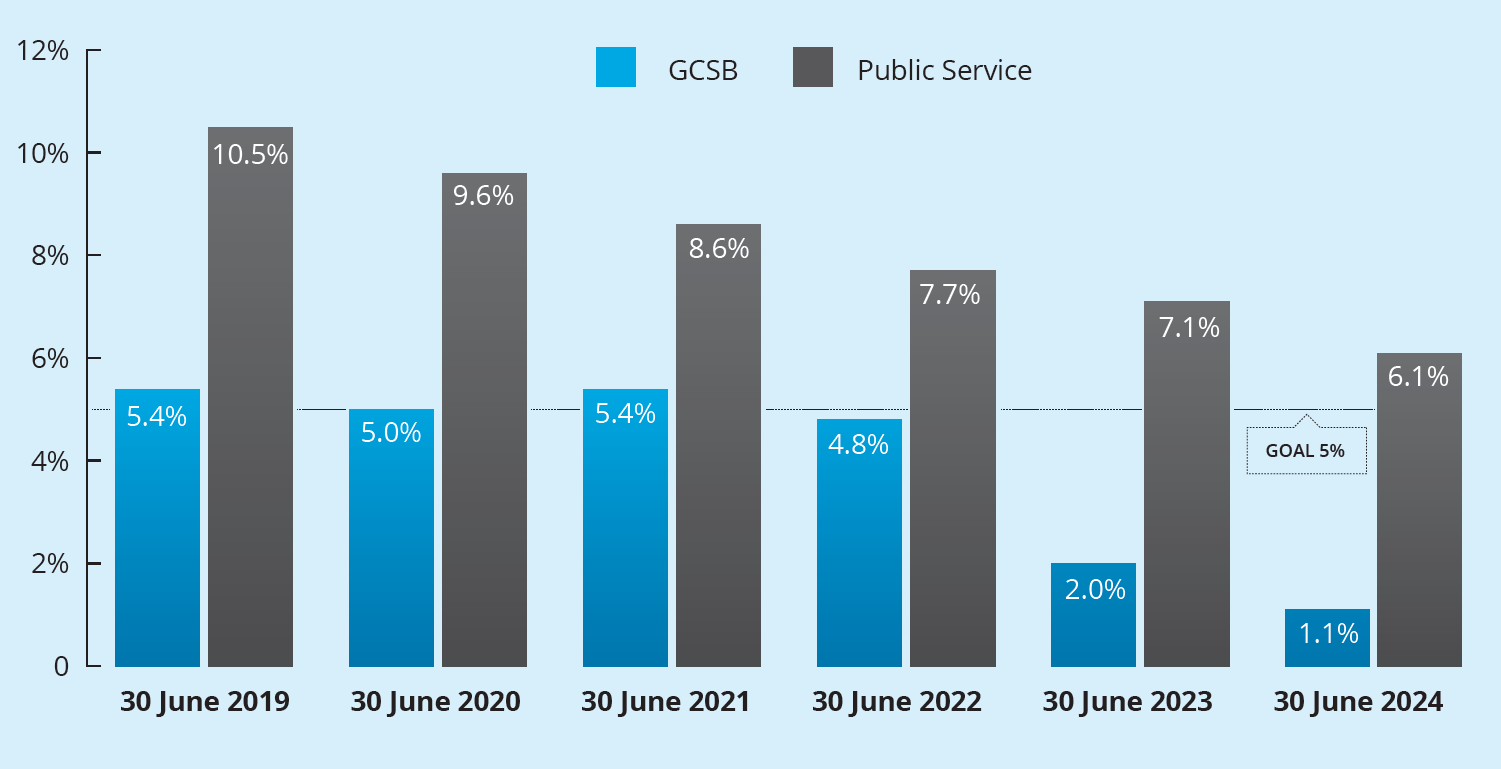
Chart: GCSB Average Gender Pay Gap (2019 to 2024)
Ethnic Diversity
Staff can choose whether or not to disclose their ethnicity. In our workforce, 90.4 percent disclosed at least one ethnicity, exceeding our targeted percent disclosure rate of 90 percent for robustness of analysis.
| 2019/20 | 2020/21 | 2021/22 | 2022/23 | 2023/24 | |
|---|---|---|---|---|---|
| European | 71.2% | 76.0% | 74.6% | 77.5% | 77.7% |
| New Zealander5 | 26.8% | 22.8% | 18.5% | - | - |
| New Zealand Māori | 7.3% | 7.2% | 9.1% | 9.8% | 9.5% |
| Asian | 5.5% | 7.2% | 7.3% | 7.3% | 9.0% |
| Pacific Peoples | 1.6% | 2.6% | 3.2% | 3.1% | 3.3% |
| MELAA | 1.1% | 1.2% | 1.6% | 0.8% | 1.1% |
| Other | - | 0.2% | 0.2% | 15.7% | 13.0% |
| European | New Zealand Māori | Asian | Pacific Peoples | MELAA | Other |
|---|---|---|---|---|---|
| 80.6% | 22.6% | 6.5% | - | - | 12.9% |
Ethnic Pay Gaps
European is the only ethnicity with a negative average ethnic pay gap (in favour). This means on average Europeans are earning 4.6 percent more than non-Europeans. Of the three groups with sufficient numbers for statistical robustness, European has the highest average pay gap.
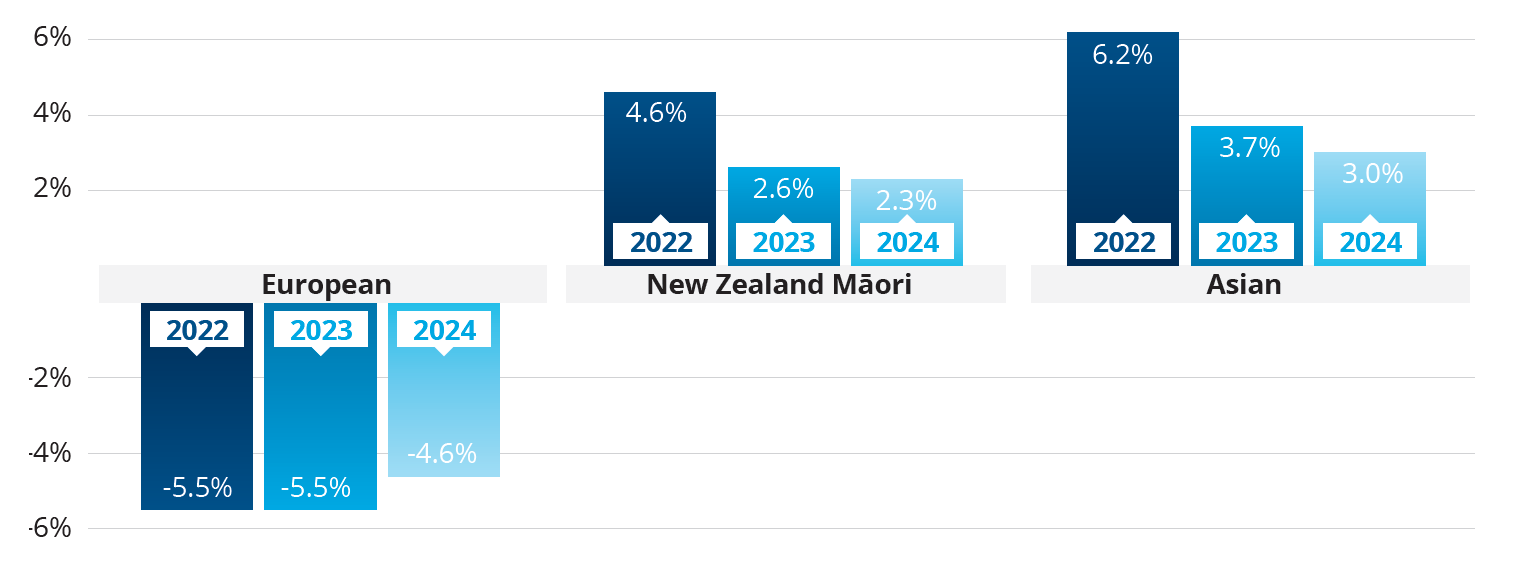
Table 5: The GCSB’s Ethnic Pay Gaps (30 June 2024)
4 These metrics cover the number of employees who identify themselves as having a certain ethnicity. They are calculated by taking the number of people who identify themselves as being in the ethnic group divided by the number of people who have provided an ethnicity. A person may identify with multiple ethnicities. This means the total of all percentages can add up to over 100 percent. Metrics are taken as at 30 June of the relevant year.
5 From 2022/23, staff who self-identified their ethnicity as New Zealander fall under ‘Other’ based on Stats NZ ethnicity groupings.
6 Pacific Peoples and MELAA have been excluded as the number of staff identifying with this ethnicity is under the number needed for statistical robustness. An ethnic pay gap measures the difference between the average (or median) salary for an ethnic group and average (or median) salary of all those not in that ethnic group, expressed as a percentage of the average (or median) salary of those not in the ethnic group.
Kia Toipoto Pay Gap Report and Action Plan
In 2022 the Public Service Commission Te Kawa Mataaho provided new guidance and expectations for reducing pay gaps, known as the Kia Toipoto Pay Gap Action Plan. This is a three-year plan focused on addressing all pay gaps - gender, Māori, Pacific, ethnic, and other minorities (i.e. Rainbow and disabled communities).
In 2023 we partnered with staff to develop a 2023/24 action plan for our agency. We developed simple achievable actions for the short, medium, and long term. Since November we have:
- surveyed our women staff to understand their experiences within the NZIC, including questions to measure the uptake of flexible working and barriers to this
- translated our myth busting booklet into multiple languages to help break down barriers to entry
- worked with our Military Network to explore how we measure pay gaps for our ex-military staff, and
- established a new mentoring programme for staff.
We will review our progress against our action plan in mid-2024, and once again partner with staff to develop and agree an action plan for 2024/25.
Experience of Women
We remain committed to increasing the representation of women in our workforce and ensuring their experiences lead to positive, fulfilling careers in national security.
In 2019 we researched the experiences of women in the NZIC and set an action plan to address the research findings. The plan focused on four identified themes – culture, leadership, career development and flexibility, with regular monitoring of progress against each action.
In 2024 we invited our female staff to respond to a further survey, to understand whether the initiatives implemented following the 2019 survey had any impact on their experience in the workplace. The 2024 survey was structured around the employee lifecycle. This allowed us to identify touchpoints that are particularly impactful for women and their careers within our agency.
In particular, we wanted to understand how attitudes and behaviours had changed within the workplace since 2019. We also wanted to gain insights into women’s career aspirations, how they are supported/guided to achieve these, and what contributes to women wanting to continue their career within the intelligence community.
We are reviewing and analysing the data from the survey and will share the results with all staff when available. This will include opportunities to continue improving the experience of women within the NZIC, and address any issues that have been highlighted in the feedback.
While it was our women’s voices and experiences that were shared, any opportunities we take to continue to improve experiences and address identified issues will benefit not just women, but all staff within the NZIC.
MentorLite
MentorLite is a self-service mentoring programme introduced in early 2024, allowing any staff member to participate in this programme, either as a mentor or a mentee. The programme is designed to make it easy for staff to find more experienced colleagues to help them develop, learn and grow through:
- providing opportunity for sharing best practice, knowledge and experience
- building relationships throughout our community
- encouraging our people to work together across different work areas and disciplines, and
- creating an opportunity for fresh ideas and innovations to be created/shared.
It is important that staff are able to find a mentor they can connect with, and our mentors come from all levels, areas and backgrounds. They are able to support staff in a number of areas, including communication, leadership, personal development and risk management.
People & Capability also worked closely with our Women in Operations employee-led network to establish a bespoke mentoring programme for them, based on the MentorLite framework. This aligned with an action in our 2023/24 Kia Toipoto Pay Gap Action Plan to support employee-led networks who wish to establish their own mentoring programmes.
Looking Ahead
We continue to be mindful of the need to be financially sustainable in the medium term. We are reflecting on our staff structure and adapting as appropriate. Considerations in this area have included a joint work programme with the NZSIS. At the end of the 2023/24 reporting year, this agency-driven work was still underway, with change and consultation processes not yet initiated, and decisions still to be taken.
Progress against Te Kawa Mataaho Papa Pounamu Commitments
Te Urupae i te Mariu
Addressing Bias
- Of our GCSB leaders, 81.6 percent, and 71 percent of senior management completed our Understanding & Managing Bias learning module.
- We surveyed women to understand their experience within the NZIC. This included questions to understand if women felt they were treated differently due to their gender. Findings of the survey will identify focus areas to improve women’s experiences.
Te Āheinga ā-Ahurea
Cultural Competence
- Our new Pasifika Matters Workshop explores the diversity of the Pacific Island region and the relationship with, and experience of, Pasifika people in New Zealand.
- We introduced new workshops to develop our people’s capability so that they are able to engage effectively with iwi and Māori when undertaking our national security functions. This is also key to helping us attract and retain the talent required to achieve our national security outcomes.
Hautūtanga Ngākau Tuwhere
Inclusive Leadership
- Development of our Manager Induction Pathway, which aims to build management capability in alignment with inclusive leadership practices, continues. The programme will be compulsory for all managers, new to role and/or new to the organisation.
- Our Manager Essentials toolkit has been built to sit alongside and support our Manager Induction pathway. Our D&I practices, including inclusive leadership, are embedded into the toolkit.
Ngā Tūhohonga e Kōkiritia ana e Ngā Kaimahi
Employee-led Networks
- Worked with our Women in Operations network to develop a bespoke mentoring programme, based on our MentorLite framework.
- With our Rainbow network, initiated a project to successfully develop and deliver a human-centric process to enable anyone to change their name (legal and preferred) easily, within our strict security environment.
- Alongside our ELNs, reviewed and made changes to improve and enhance our Introduction to ELNs and Staff Group sessions.
Hautūtanga Kākano Rau
Fostering Diverse Leadership
- Delivered an International Women’s Day workshop series to empower women. The workshops provided personal and professional growth, and the tools needed to proactively address challenges women may face when advancing their careers.
- We will be exploring this further, including establishment of actions and/or pieces of work, in the next iterations of our Kia Toipoto Pay Gap Action Plan and D&I Strategy.
Providing a Safe and Healthy Work Place
While our people are focused on the protection of New Zealand, our Health and Safety Team are focussed on the ongoing health, wellbeing and physical safety of our people. We continue to take a pragmatic approach to health and safety, while ensuring that we are complying with the Health and Safety at Work Act 2015.
Risk Management
To reduce the likelihood of low-frequency, high impact catastrophic incidents our focus continues to identify and improve outcomes for the GCSB critical risks by putting controls and monitoring processes in place.
The Health and Safety Critical Risk Management continues to focus on physical, health and psychosocial risks such as driving, hazardous substances and working unsociable hours with critical controls identified to ensure the ongoing safety and wellbeing of our people.
Infrastructure
The GCSB construction of the all-of-government data centre continues. During this period there was one notifiable event recorded relating to an uncontrolled fall from heights involving building material. No serious injury was obtained; the case closed without further WorkSafe NZ investigation.
Worker Engagement and Participation
We focused on improving worker engagement and education. The second NZIC Health and Safety Representative Conference was held in April 2024, bringing together 30 representatives across the GCSB and NZSIS. We also focused on providing health and safety training to our managers and staff that manage building contractors.
We continue to have a 100 percent completion rate for all new starters completing the health and safety Induction Module
| Close calls / non injury | Restricted work Injuries7 | First aid Injuries | Environmental Events |
|---|---|---|---|
| 6 | 1 | 18 | 1 |
7 A restricted work injury is any work-related injury that prevents an employee or contractor from performing one or more of the routine functions associated with their job for a full working day.
Our Finances
Ā Mātau Pūtea
Being Financially Responsible
The GCSB is committed to being financially sustainable and a responsible user of public funds. We completed a rapid savings exercise during the reporting period which aligned with our ongoing work programme on financial sustainability. Our budget holders are aware of the ongoing importance of financial management.
Rapid Savings
Public sector agencies were asked to identify savings through the Budget 2024 process. The GCSB will be making savings of $7.62 million per year from 2024/25, through efficiencies in areas such as contractor and consultant spending, training and development, and travel.
In addition, funding of $5.742 million over four years that had been set aside in a tagged contingency for the GCSB in Budget 2023 to expand the mandate of the GCISO to Crown Agents was returned. The GCISO mandate, refreshed by Cabinet in 2023, will not change. This function will continue to be delivered in support of existing mandated agencies.
As a result of the efficiency savings of $7.62 million, we will be operating with a higher degree of financial risk than previously. This means operating with smaller financial contingencies in place, which may diminish our ability to meet the costs of surge or unscheduled activity without identifying trade-offs.
Financial Sustainability
At the close of the reporting year, the GCSB and NZSIS were undertaking a joint work programme to ensure the financial sustainability of the agencies in the longer term, as well as in the context of the current fiscal environment. This began before the rapid savings exercise as a separate process where our agencies both recognised we need to be sustainable over the long term and initiated work to ensure this.

